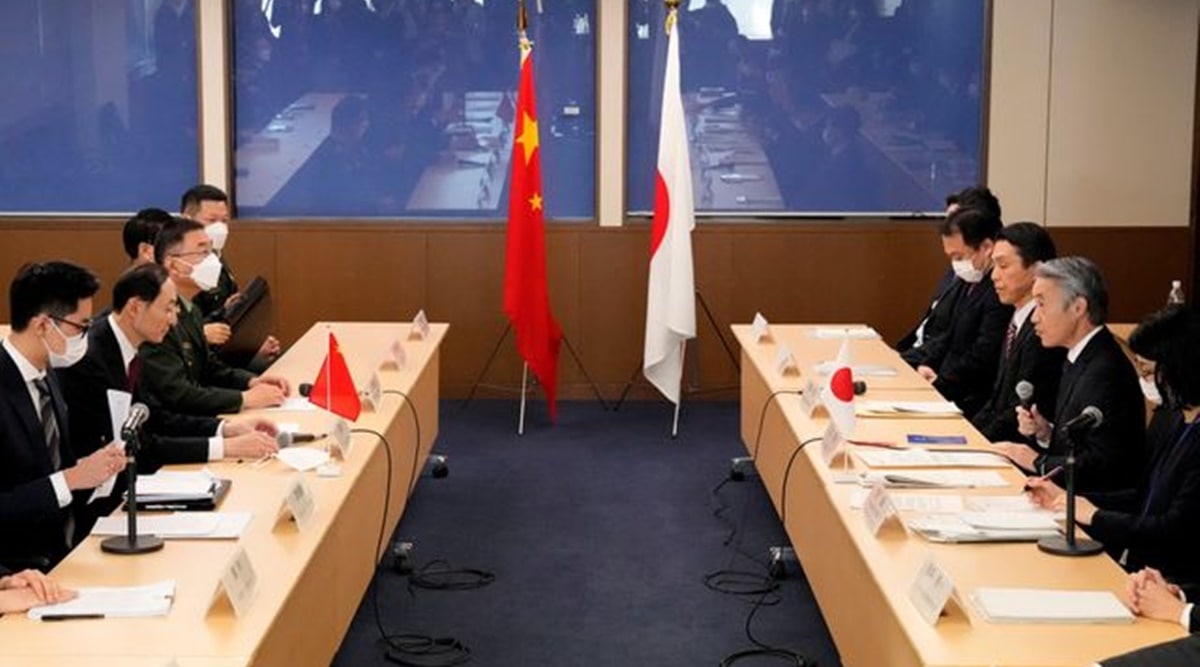As Japan and the world observe the 80th anniversary of events concluding the Second World War, its latest Defence White Paper unequivocally identifies China as the “greatest strategic challenge” that must be addressed with urgency and resolve.
Framed against what it describes as the “most severe and complex security environment” since 1945, the Government of Japan has committed to allocating a record ¥8.5 trillion (US$55 billion) defence budget in FY2025. This funding is described as both “necessary and sufficient” for the comprehensive strengthening of national defence capabilities.
The report aims to communicate Japan’s security worldview and strike a balance between rearmament and its pacifist principles. For India, the white paper presents a strategic declaration by a key security partner, which has far-reaching consequences for the balance of power in the Indo-Pacific.
For the first time, the document identifies the Chinese Coast Guard as central to grey-zone coercion, citing its role in frequent incursions into Japanese territorial waters and tailgating Japanese fishing vessels. It also mentions a record number of incidents of PLA aircraft intruding into Japanese airspace and the Air Defence Identification Zone.
Grey-zone activities include cyber, hybrid, and paramilitary manoeuvres intended to alter the status quo without formal warfare. While similar incidents occurred in previous years, the frequency and proximity of these actions have expanded. Coupled with China’s Coast Guard Law of 2021, which allows the use of force in disputed waters, Tokyo might be compelled to accept these as evidence of a new normal.
Japan perceives that the postwar rules-based order in East Asia is eroding, with China militarising the South China Sea and aligning more deeply with Russia through joint patrols in the East China Sea and Sea of Japan. Unsurprisingly, after the paper’s release, Beijing lodged a diplomatic protest, accusing Japan of inflating the “China threat” and rebuking what it sees as justification for remilitarization.
The most important development has been the establishment of Japan’s Joint Operations Command (JJOC) for unified Army-Navy-Air coordination in March under Lt. Gen. Kenichiro Nagumo. Close integration with US forces aims to improve operational readiness for contingencies and create joint duty frameworks. The creation of JJOC reflects structural reform that has rarely been seen since the founding of the Self-Defence Force.
While the US–Japan alliance remains central, Japan is increasingly aware of the volatility of US domestic politics and the risk of American retrenchment. This has also led Tokyo to emphasise autonomous deterrence capability in its recent strategy documents.
In this context, the paper outlines capability investments that prioritise long-range cruise missiles, mobile radar systems in Okinawa, offshore patrol vessels, and Aegis-equipped destroyers. Moreover, it is accelerating the acquisition of US-made Tomahawk missiles and standoff systems, including upgrading its Type-12 anti-ship missiles.
At the outset, the Minister of Defence notes the importance of “promoting multilayered defence cooperation with like-minded countries,” explicitly naming Indonesia, the Philippines, and India for the first time. The reference to these nations, each dealing with varied forms of Chinese aggression, suggests that Japan seeks to form webs of functional defence cooperation in the region.
The mention of “Japan-India Defence cooperation in the Indo-Pacific region (JIDIP)” is notable. While Japan and India have engaged in bilateral dialogues, naval exercises, and logistic support agreements, branding their coordination under a dedicated framework such as JIDIP signals intent to systematise defence engagement. From India’s perspective, this articulation is a recognition of its emerging status as a net security provider in the Indian Ocean and adjacent maritime corridors.
With one of the world’s most ageing populations and a shrinking youth base, Japan’s SDF faces persistent recruitment shortfalls and high dropout rates in early service years. The Ministry of Defence is now prioritising “improving the treatment and working environments of the SDF and establishing lifetime career plans covering recruitment and assistance.” Towards this, it plans to upgrade dormitories, recreational facilities, and family accommodations to make deployment life more sustainable, with special attention given to facilities for female personnel.
This is done keeping in mind the broader objective of making the SDF a more attractive career choice and retaining highly trained personnel longer by offering greater post-service benefits and pathways for social reintegration. Hence, in the backdrop, there is an increasing awareness that defence modernisation must go hand in hand with sociodemographic adaptation, especially given that their labour force is not expanding.
In 2022, Japan announced the Global Combat Air Programme (GCAP) with the UK and Italy to co-develop a sixth-generation fighter jet. Formal development is expected to commence this year, and production is aimed for the mid-2030s. To accommodate GCAP and potential third-country transfers, defence equipment export regulations were revised in 2024.
This foray into technological and industrial collaboration signals Japan’s entry into top-tier innovation ecosystems. It also sets the tone for defence procurement and private sector synergy. For example, companies like Mitsubishi Heavy Industries and NEC often align R&D and production plans with cues from the white paper.
Over the last decade, these white papers have exhibited continuity in foundational alliances and significant changes in threat assessment and normative framing. The language about China has become more severe, moving from cautious to explicitly adversarial. Budget growth is no longer incremental but exponential, reflecting changed realities.
While it’s too soon to assess whether the stated intentions will assuage the second Trump administration, it’s clear that by characterising the current era as a “new era of crisis,” the report places the Indo-Pacific at the epicentre of global power dynamics.
The writer is a Research Analyst for the Indo-Pacific Studies Program at the Takshashila Institution

